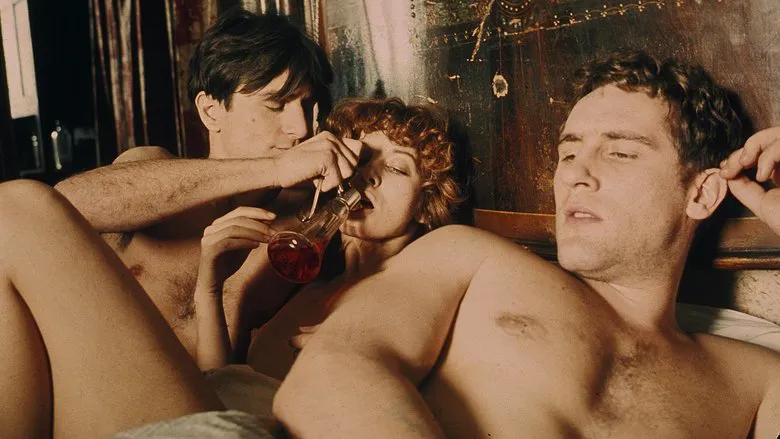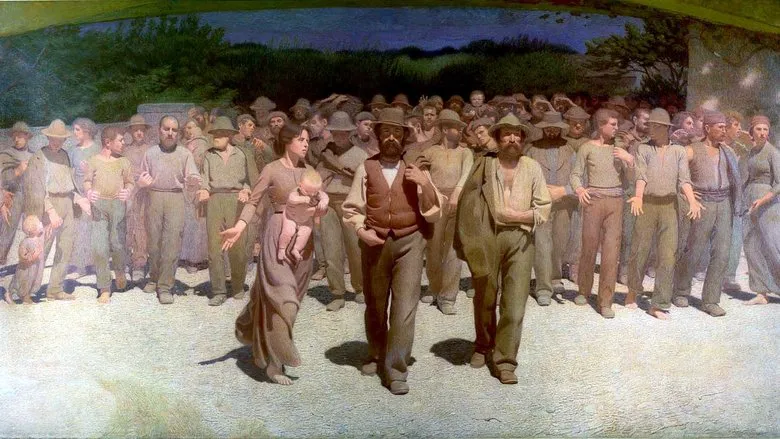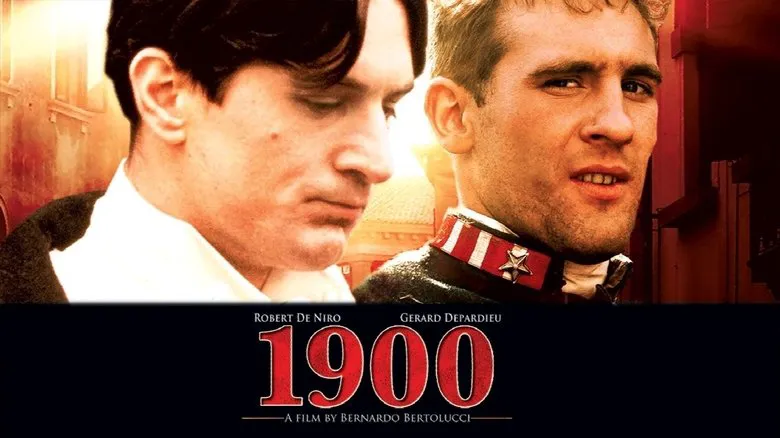“1900”: Unpacking Bertolucci’s Grand Opus on Class, Power, and Destiny
Bernardo Bertolucci’s monumental 1976 epic, “1900” (Novecento), stands as a towering achievement in cinematic storytelling. Spanning five decades of tumultuous Italian history, from the dawn of the 20th century to the twilight of World War II, the film doesn’t just narrate events; it immerses viewers in the dramatic socio-political shifts through the deeply personal, yet ideologically charged, friendship of two men born on the same fateful day but into vastly different worlds. Far from being a mere historical account, “1900” is a sprawling, ambitious fresco that uses its epic scope to dissect the very fabric of class, power, and identity that shaped a nation.
A Tale of Two Italies: Olmo and Alfredo’s Intertwined Fates
At the heart of “1900” lies the compelling, often fraught, parallelism between its two protagonists: Olmo Dalcò, portrayed with understated power by Robert De Niro, and Alfredo Berlinghieri, brought to life by a nuanced Gérard Depardieu. Born on the same property in rural Emilia-Romagna, their destinies are sharply separated by the chasm of their social standings. Olmo is the son of a peasant farmer, tethered to the land and the burgeoning socialist movements of his community. Alfredo, conversely, is the heir to a wealthy landowning family, steeped in aristocratic tradition and privilege, a world represented by his cunning father, the Count, played by a formidable Burt Lancaster.

Bertolucci masterfully charts their parallel journeys, from their innocent childhood camaraderie, where the innate human connection temporarily bridges societal divides, to their adulthood, where the seismic shifts in Italian society pull them onto diametrically opposed paths. Olmo becomes a passionate advocate for workers’ rights, a leader in the union movement wrestling for justice against entrenched landowning power. Alfredo, despite moments of rebellion and discontent with his own class, ultimately represents the old order, grappling with the weight of tradition and the responsibility of his family’s legacy. Their evolving relationship reflects the larger struggle of Italy itself: tradition versus progress, aristocracy versus proletariat, with explosive consequences.

The Brushstrokes of Reality: Vittorio Storaro’s Cinematography
Beyond its intricate narrative, “1900” is an astonishing visual triumph, largely thanks to the legendary cinematography of Vittorio Storaro. With his signature use of light, shadow, and a rich, evocative color palette, Storaro transforms the sweeping landscapes of the Italian countryside into a character in itself. Through breathtaking long takes, majestic wide shots that capture the grandeur of the rural expanse, and intimate close-ups that lay bare the characters’ inner turmoil, he crafts a deeply immersive experience.

Storaro’s visual poetry not only enhances the film’s epic scale but also serves to underscore its central themes. The idyllic beauty of the land often provides a stark contrast to the brutal social realities unfolding upon it, or the violent clashes that erupt. His work on “1900” is a masterclass in how cinematography can elevate storytelling, grounding the historical drama in a tangible, emotionally resonant world.
Spanning Generations: Time and Memory as Narrative Weave
One of the less-discussed but profoundly innovative aspects of “1900” is Bertolucci’s audacious manipulation of time and memory. The film unfolds over numerous decades, but not always in a strictly linear fashion. Through fragmented storylines, shifting narrative perspectives, and the subtle interplay of past and present, Bertolucci creates a tapestry where personal recollections intertwine with historical events. This narrative liberty allows for a more nuanced exploration of how the past continuously shapes the present, and how individual memories, often imperfect, contribute to a collective historical consciousness. It challenges the viewer to actively piece together the sprawling timeline, mirroring the characters’ own complex experiences of life’s relentless march.
The Director’s Vision: Bernardo Bertolucci’s Unflinching Gaze
“1900” is quintessentially a Bertolucci film: bold, ambitious, and unafraid to tackle challenging political and social themes with uncompromising artistic vision. The director’s intent was not merely to recount history but to interrogate it, to explore the contradictions and complexities of a nation teetering between old and new, tradition and revolution. The film’s eventual climax, with the ominous rise of fascism, becomes a powerful, almost inevitable, consequence of the deep-seated divisions portrayed throughout the narrative.
In the end, Olmo and Alfredo’s divergent yet intertwined paths serve as a potent allegory for the hard choices and compromises individuals are forced to make when confronted by historical forces seemingly beyond their control. “1900” is a testament to the power of cinema to reflect and question, an enduring work that continues to prompt reflection on the intricate dance between class, power, and identity in shaping our shared human journey. Its lingering images and profound questions resonate long after the credits roll, cementing its place as a monumental piece of world cinema.